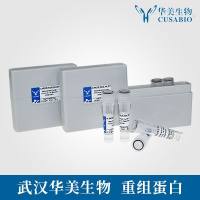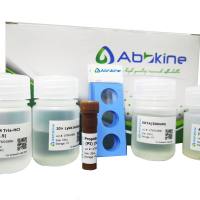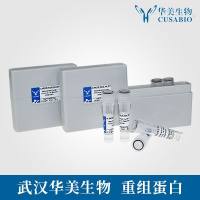Syntheses of DNA Duplexes That Contain a N4C‐Alkyl‐N4C Interstrand Cross‐Link
互联网
- Abstract
- Table of Contents
- Materials
- Figures
- Literature Cited
Abstract
This unit describes a simple procedure for preparing short DNA duplexes that contain a single N4 C?alkyl?N4 C interstrand cross?link. The synthesis is carried out on an automated DNA synthesizer using standard phosphoramidite chemistry. The cross?link is introduced during the synthesis of the duplex. The method can be used to prepare milligram quantities of cross?linked duplexes suitable for physical studies and for the preparation of larger DNA molecules that can be used as substrates to study DNA repair in whole cell extracts and in living cells in culture. Curr. Protoc. Nucleic Acid Chem. 44:5.10.1?5.10.9. © 2011 by John Wiley & Sons, Inc.
Keywords: oligonucleotide; interstrand cross?link; DNA duplex; synthesis
Table of Contents
- Preparing Short DNA Duplexes that Contain a Single N4C‐Alkyl‐N4C Interstrand Cross‐Link
- Basic Protocol 1: Synthesis of an N4C‐Ethyl‐N4C Cross‐Linked Duplex
- Basic Protocol 2: Purification of the Cross‐Linked Duplex
- Commentary
- Literature Cited
- Figures
Materials
Basic Protocol 1: Synthesis of an N4C‐Ethyl‐N4C Cross‐Linked Duplex
Materials
Basic Protocol 2: Purification of the Cross‐Linked Duplex
Materials
|
Figures
-

Figure 5.10.1 Structure of the N4 C‐ethyl‐N4 C interstrand cross‐link. The wavy lines indicate the two strands of the DNA helix. The cross‐link can be inserted in the DNA duplex as a C‐C mismatch (S.1 ); in a ‐CG‐ sequence (S.2 ); in a ‐GC‐ sequence (S.3 ); or in a ‐GNC‐ sequence (S.4 ) where N is A, G, C, or T. The reagents used to prepare the interstrand cross‐link are: 5′‐ O ‐dimethoxytrityl‐3′‐ O ‐ t ‐butyldimethylsilyl‐N4 ‐aminoalkyl‐2′‐deoxycytidine (S.5 a ), where DMT and TBS are dimethoxytrityl and t ‐butyldimethylsilyl‐protecting groups, and 5′‐dimethyoxytrityl‐O4 ‐triazole‐deoxyuridine‐3′‐ O ‐cyanoethylphosphoramidite (S.5 b ). Steps in the preparation of the cross‐linked duplex on the polystyrene support (PS) include: synthesis of arm 1 (S.6 ), where U is O4 ‐triazole‐deoxyuridine; introduction of the N4 C‐alkyl‐N4 C interstrand cross‐link (S.7 ); simultaneous synthesis of arms 2 and 3 (S.8 ); and synthesis of arm 4 (S.9 ). View Image -

Figure 5.10.2 Strong anion‐exchange (SAX) HPLC analyses of deprotected oligonucleotide intermediates S.6 (A ), detritylated S.7 (B ), and S.8 (C ) created during the synthesis of the N4 C‐ethyl‐N4 C cross‐linked duplex S.9 (D ). For each chromatogram, the 0.46 × 25–cm SAX column was eluted with a 30 mL linear gradient of 0.0 M to 0.5 M sodium chloride in 100 mM Tris⋅Cl, pH 7.8, containing 10% acetonitrile at a flow rate of 1.0 mL/min. The column was monitored at 260 nm and the X‐axis shows time in min. View Image -

Figure 5.10.3 C‐18 reversed‐phase HPLC analyses of deprotected oligonucleotide intermediates S.6 (A ) and detritylated S.7 (B ). For each chromatogram, the 0.46 × 15–cm C‐18 reversed‐phase column was eluted with a 20 mL linear gradient of 2% to 50% acetonitrile in 50 mM sodium phosphate buffer (pH 5.8) at a flow rate of 1.0 mL/min. The column was monitored at 260 nm and the X‐axis shows time in min. View Image
Videos
Literature Cited
| Literature Cited | |
| Guainazzi, A. and Scharer, O.D. 2010. Using synthetic DNA interstrand crosslinks to elucidate repair pathways and identify new therapeutic targets for cancer chemotherapy. Cell Mol. Life Sci. 67:3683‐3689. | |
| Hlavin, E.M., Smeaton, M.B. and Miller, P.S. 2010a. Initiation of DNA interstrand cross‐link repair in mammalian cells. Environ. Mol. Mutagen. 51:604‐624. | |
| Hlavin, E.M., Smeaton, M.B., Noronha, A.M., Wilds, C.J., and Miller, P.S. 2010b. Cross‐link structure affects replication‐independent DNA interstrand cross‐link repair in mammalian cells. Biochemistry 49:3977‐3988. | |
| Muniandy, P.A., Liu, J., Majumdar, A., Liu, S.T. and Seidman, M.M. 2010. DNA interstrand crosslink repair in mammalian cells: Step by step. Crit. Rev. Biochem. Mol. Biol. 45:23‐49. | |
| Noll, D.M., Noronha, A.M. and Miller, P.S. 2001. Synthesis and characterization of DNA duplexes containing an N(4)C‐ethyl‐N(4)C interstrand cross‐link. J. Am. Chem. Soc. 123:3405‐3411. | |
| Noll, D.M., Noronha, A.M., Wilds, C.J., and Miller, P.S. 2004. Preparation of interstrand cross‐linked DNA oligonucleotide duplexes. Front Biosci. 9:421‐437. | |
| Noll, D.M., Webba da Silva, M., Noronha, A.M., Wilds, C.J., Colvin, O.M., Gamcsik, M.P., and Miller, P.S. 2005. Structure, flexibility, and repair of two different orientations of the same alkyl interstrand DNA cross‐link. Biochemistry 44:6764‐6775. | |
| Noll, D.M., Mason, T.M. and Miller, P.S. 2006. Formation and repair of interstrand cross‐links in DNA. Chem. Rev. 106:277‐301. | |
| Noronha, A.M., Noll, D.M., Wilds, C.J., and Miller, P.S. 2002a. N(4)C‐ethyl‐N(4)C cross‐linked DNA: Synthesis and characterization of duplexes with interstrand cross‐links of different orientations. Biochemistry 41:760‐771. | |
| Noronha, A.M., Wilds, C.J., and Miller, P.S. 2002b. N(4)C‐alkyl‐N(4)C cross‐linked DNA: Bending deformations in duplexes that contain a ‐CNG‐ interstrand cross‐link. Biochemistry 41:8605‐8612. | |
| Rajski, S.R. and Williams, R.M. 1998. DNA cross‐linking agents as antitumor drugs. Chem. Rev. 98:2723‐2796. | |
| Smeaton, M.B., Hlavin, E.M., McGregor Mason, T., Noronha, A.M., Wilds, C.J., and Miller, P.S. 2008. Distortion‐dependent unhooking of interstrand cross‐links in mammalian cell extracts. Biochemistry 47:9920‐9930. | |
| Smeaton, M.B., Hlavin, E.M., Noronha, A.M., Murphy, S.P., Wilds, C.J. and Miller, P.S. 2009. Effect of cross‐link structure on DNA interstrand cross‐link repair synthesis. Chem. Res. Toxicol. 22:1285‐1297. | |
| Swenson, M.C., Paranawithana, S.R., Miller, P.S., and Kielkopf, C.L. 2007. Structure of a DNA repair substrate containing an alkyl interstrand cross‐link at 1.65 A resolution. Biochemistry 46:4545‐4553. | |
| Webba da Silva, M., Noronha, A.M., Noll, D.M., Miller, P.S., Colvin, O.M., and Gamcsik, M.P. 2002. Solution structure of a DNA duplex containing mispair‐aligned N4C‐ethyl‐N4C interstrand cross‐linked cytosines. Biochemistry 41:15181‐15188. |









